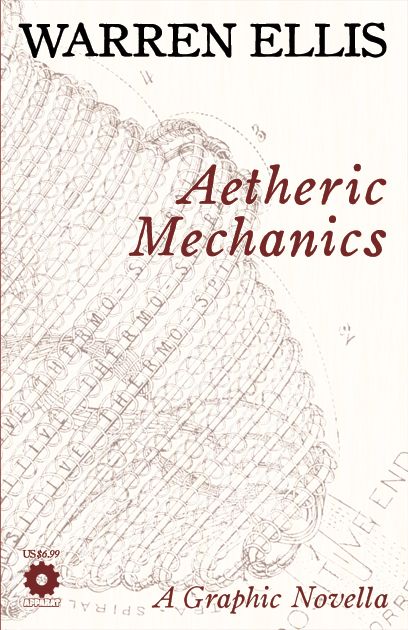It's tempting to simply write "Aetheric Mechanics" off as a "Sherlock Holmes meets future technology" pastiche, which is a perfectly entertaining premise for a graphic novella (as Warren Ellis calls this book), but that's not quite right. It's not wrong, either, but it's not right. If Ellis wanted to do that, he would have just done it since Sherlock Holmes is public domain and there's no need to invent Sax Raker and Dr. Watcham when the real things are available for use. So, Ellis must have a purpose for these new creations that are obviously based on Holmes and Watson... but what is it?
In a sense, figuring out that purpose is part of the real mystery in "Aetheric Mechanics," the one posed to the reader. Raymond Chandler once wrote "The most effective way to conceal a simple mystery is behind another mystery" and that's precisely what Ellis does here. The other mystery being "Sax Raker and the Case of the Man Who wasn't There," where Raker is charged with finding a man who flickers in and out of reality, and has murdered at least two scientists. The only key to the case is that both men specialize in aetheric mechanics, a science devoted to apergy energies, which, when applied to spacecraft, "bend space, and space impels the craft."
The year is 1907 and Dr. Robert Watcham has just returned from the war between England and Ruritania, which is not going well for England. He quickly settles back into the chronicler/assistant/companion role for Raker, who very much is Holmesian, but Ellis writes him more as a man afflicted with Asperger's and obsessive compulsive disorder -- at one point, he becomes unsettled because Watcham has picked up the new habit of adding an extra lump of sugar to his tea. Raker is cynical and childish in his utter focus on solving crimes, a pursuit he thinks is above such petty things as politics and war.
Artist Gianluca Pagliarani captures the stoic/serious nature of Raker wonderfully, but also the odd moments of glee like when Raker mentions the new case to Watcham. Raker looks positively giddy at the idea that there's a man who flickers in and out of reality killing people. As well, Pagliarani offers a wonderful amount of detail, which is necessary in depicting a hybrid of early 20th century London and futuristic technology. The lines are crisp and clean, and he knows when to back off and not use too many lines. His splash of a giant robot attacking a town stops the book dead as you simply want to take your time and soak it all in.
The solutions to the explicit and implicit mysteries are the same and very quite ingenious on Ellis's part as the revelation both exposes the utter lack of depth in Raker and pushes him to grow beyond himself. "Aetheric Mechanics" may seem simple on the surface, but it is one of the best things Ellis has written in recent years, mixing a sentimentality not often seen with his obsession with emerging technology to a wonderful effect. He and Pagliarani create a world that is intricate, detailed, and not easily dismissed.

